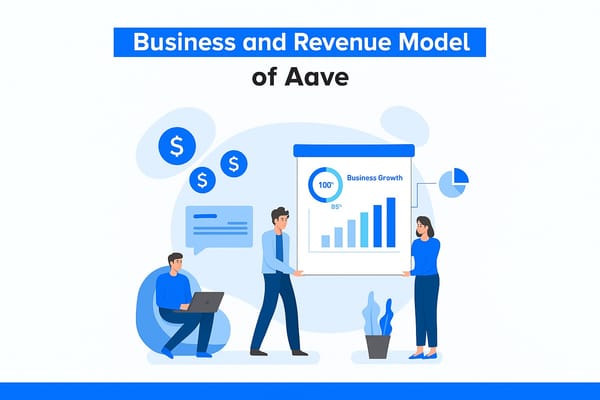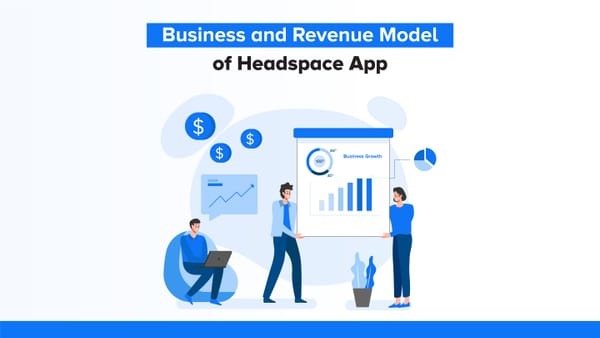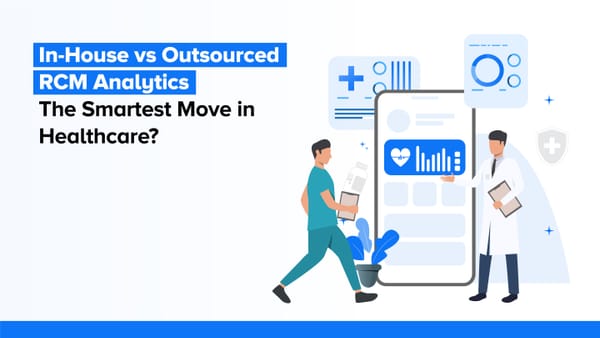Crafting Software Architectures: The Path to Scalability and Robustness

“The pessimist complains about the wind; the optimist expects
it to change; the realist adjusts the sails.”
– William Arthur Ward
Success in business today is equated to one's ability to adapt and expand. To remain ahead, companies need flexible and reliable software systems to stay competitive and fuel growth. Performance scalability is a critical factor in modern software architectures. As businesses grow and user demands increase, the ability to handle higher workloads without compromising system performance becomes paramount. Achieving this balance requires careful planning and implementation of scalable solutions.
Understanding Scalability in Software Architecture
Scalability is defined as the capacity of the system to handle escalating workloads and additional users without performance degradation. This allows businesses to expand effectively without losing efficiency.
For organisations that are based on the web, flexibility is a requirement. As the company grows in size and the number of customers, the demands on its software systems also increase. Failing to provide a flexible system may result in issues ranging from slow reaction patterns to crashing systems, which will irritate consumers and cost the company significant amounts of money.
In software architecture, scalability implies the design of a software system in such a way that it is progressively viable for the business, allowing for capacity enhancement without substantially compromising performance.
Horizontal versus vertical scaling
Horizontal scaling or scaling out means the addition of servers to support an increase in demand. In contrast, vertical scaling means increasing the capacity of the existing server already in place. The selection of the right kind of scaling strategy is a fundamental architectural decision on its own, as all have their advantages and their hurdles.
Load Balancing
Load balancing helps attain scalability since it prevents a server from being overloaded by distributing users’ requests among several servers. This means that there is both efficiency as well as flexibility, thus limiting downtime and maximising user retention.
Achieving Stability Through Robustness
The term robustness, however, is used to describe the capability of a software system to supply stable and functional performance when uncertain events or errors occur. It makes sure that the system will handle different situations and work normally even if some disruptions arise, resulting in less downtime and increased reliability. Software systems are vital for robustness, especially in a marketplace where downtime impacts the trust and revenue of customers.
Error Handling
Handling errors in a system is essential; otherwise, the system can’t detect, manage, or recover from failures. The system may include fallback mechanisms that reroute the requests to some other resources or use another resource if the primary fails.
Redundancy
Robust systems can afford to have backups for critical components because they will not break down if some components go haywire. In redundancy, we duplicate the most essential elements of the system to avoid failure; if one part fails, another can continue to replace it. That redundancy covers lost data and service interruptions.
Design for Scalability from the Start
Designing with Scalability in mind is essential when building a resilient, adaptable system. Additionally, when a system is designed to scale from day one, it can handle the load without compromising performance. It lets the system grow smoothly as demand grows. But if we skip Scalability from the beginning of the system, it can be impactful to slow down or even crash as the load increases, resulting in data or services bringing things to a halt. Fixing these issues later on is typically costly and time-consuming, usually with significant overhauls that can cause downtime and interfere with the business.
However, a scalable design sets up a solid foundation so the system can handle growth easily, making users happy and the company run smoothly. A scalable system also allows for easy adding of new features, adapting to changes in the market, and maintaining a fast and reliable user experience, so the product will remain competitive and resilient over time.
In simple words, Scalability is something that we design for, a strategic decision that allows you to scale without issue, reduce costs, and retain the excellent quality of experience along the way to business development.
Should businesses commit to Crafting Solutions That Evolve and sustain?
Well, there you have it – the answer is a straightforward yes!
In a world where trends change with the blink of an eye and customer expectations seem to shift overnight, businesses constantly compete to stay relevant by creating lasting and sustainable solutions.
Businesses that set sustainable solutions in the marketplace show their dedication to quality and resilience. Evolving and sustaining solutions is a strategy that engages and builds lasting impact. Companies that focus on adaptable, long-term solutions remain relevant in a changing world and build authentic, loyal customer relationships. This is beyond short-term gains; it sets trust and proves to clients that you are a committed partner for now and for the future.
In a nutshell, the art of building evolving solutions is about future-proofing: the ability of a business to maintain growth with its client and the foothold of permanence.
Bringing scalability and robustness together
Creating software that blends scalability with robustness means designing systems that can expand and evolve with a business while remaining steady and trustworthy. This balance is essential for any company aiming to thrive in today’s fast-paced digital landscape. When a system is both adaptable and dependable, it empowers businesses to:
- Effortlessly handle user surges: when user traffic spikes—whether from a marketing push, a new product launch, or a sudden trend—a scalable, robust system can manage it without slowing down or crashing, ensuring a seamless experience for users even during high-demand moments.
- Easily add features without disruption: Businesses constantly need to adapt and innovate. A scalable software system lets companies roll out new features and updates without affecting the core experience, keeping everything running smoothly so users can enjoy improvements without interruptions.
- Recover quickly from unexpected issues: Downtime can be costly and frustrating. A robust system minimises disruptions by rapidly identifying and recovering from unforeseen problems, helping the business bounce back fast and reducing potential loss in both revenue and customer trust.
- Maintain a consistent user experience as they scale: From the fact that businesses are growing, there has been an increase in user bases and demands. A scalable, robust system scales alongside the company, offering the same quality experience to every user, whether hundreds or millions of them. That means no drop in quality, no frustrating slowdowns, no interruptions. This helps businesses scale confidently because the systems will scale proportionately and remain smooth.
Through scalability and robustness, companies can balance today’s needs as well as tomorrow’s.
The Path Forward: Scalable and Robust Software System
New technologies, along with changing business demands, are quickly changing the way software systems are built. Systems must grow quickly, adapt fast, and handle high demand without breaking down a company's requirements. Here are two key trends leading this transformation:
The Rise of Cloud Computing and Distributed Systems:
According to Gartner, global spending on public cloud services is set to climb 20.4% in 2024, reaching $675.4 billion from $561 billion in 2023.
The trend is changing as more companies move their software and data to the cloud, using remote servers instead of on-site hardware. With cloud computing, businesses can set up "scaling up" or “scaling down” in terms of demand, accommodating more users or more data without buying high-end hardware periodically. For example, companies increase their server capacity at peak season or significant sales events and decrease it later, lowering costs.
Further, cloud-based systems offer higher reliability and security that is difficult to match with the on-site infrastructure. Data is stored across multiple remote servers; hence, data loss caused by hardware failure and downtime is minimised. This is what makes cloud computing both cost-effective and dependable for businesses.
According to Statista, AWS is projected to hold nearly half of the cloud market share in 2023, leading infrastructure and platform services with 48%. Azure, Alibaba, and Google Cloud are set to generate around $167.3 billion in combined revenue.
Scalable architectures with flexible, on-demand resources like those offered by AWS, Google Cloud, and Microsoft Azure are ideal for cloud computing. Companies do not need to invest in physical servers and storage; instead, they can rent precisely what they need and adjust it up or down as demand changes.
By 2027, Gartner predicts that 50% of organisations will rely on industry cloud platforms to speed up their digital business efforts, a massive jump from less than 5% in 2022. In a microservices architecture, developers break it down into smaller, separate services, each focused on a specific function instead of building one extensive, complicated application. Think of it as a team where each member has a unique job: one service might handle user accounts, another might manage payments, and another handles notifications.
Each of these “microservices” operates independently, meaning they can be developed, updated, and even scaled up or down on their own without affecting the others. This setup is flexible because:
- More Accessibility to Scale: If one part of the application, like the payment service, gets more traffic, you can add more resources specifically for that service without touching the others.
- Faster Updates and Fixes: Since each service is separate, developers can update or fix one part without changing the entire application, which speeds up development.
- Better Use of Resources: Businesses can allocate resources exactly where needed, keeping costs efficient, especially as user demand changes.
Conclusion
We live in a fast-changing world where progress isn't just about new technologies but how they combine to create a robust digital ecosystem. Building scalable and robust software is the backbone of a software system that delivers consistent value. It's like building systems that can handle growth while setting the stage for lasting success. Scalability and robustness ensure that regardless of what challenges your software will face, it will remain stable and reliable. Together, they are the platform for our long-term success so that we can deliver a smooth user experience and fast innovation and tackle whatever comes next. Therefore, investing in scalable and robust architecture is investing in a future-proof solution that prepares your business for anything.




